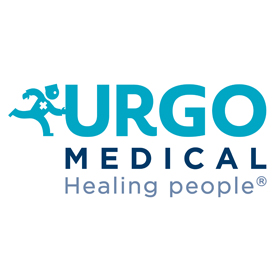Empowerment e cura centrata sulla persona: un progetto d'educazione terapeutica dedicato al paziente affetto da ulcere venose. Studio p

Ricevuto: 18 marzo 2021
Accettato: 17 maggio 2021
Published: 30 luglio 2021
Accettato: 17 maggio 2021
Abstract Views: 1574
PDF: 251
PDF (English): 64
Appendix: 0
PDF (English): 64
Appendix: 0
Publisher's note
All claims expressed in this article are solely those of the authors and do not necessarily represent those of their affiliated organizations, or those of the publisher, the editors and the reviewers. Any product that may be evaluated in this article or claim that may be made by its manufacturer is not guaranteed or endorsed by the publisher.
All claims expressed in this article are solely those of the authors and do not necessarily represent those of their affiliated organizations, or those of the publisher, the editors and the reviewers. Any product that may be evaluated in this article or claim that may be made by its manufacturer is not guaranteed or endorsed by the publisher.
Articoli simili
- Giuseppe Nebbioso, Ciro Falasconi, Viviana Nebbioso, Francesco Petrella, Antisettici e controllo della carica batterica nelle ulcere venose/Antiseptics and control of bacterial load in venous ulcers , Italian Journal of Wound Care: V. 2 N. 2 (2018)
- Giulia Casadei, Costanza Santini, Giovanni Calbucci, Inserimento del podologo e implementazione del percorso diagnostico terapeutico assistenziale del piede diabetico nell'area di Cesena/Insertion of podiatrist and implementation of the diagnostic and therapeutic care path for the diabetic foot in Cesena , Italian Journal of Wound Care: V. 2 N. 3 (2018)
- Ciro Falasconi, Vincenzo Amalfi, Patrizia Baroni, Giovanni Vito Corona, Corrado Maria Durante, Paola Fanin, Caterina Favaro, Massimo Fornaciari, Alessandro Farris, Manuela Galleazzi, Francesco Giacinto, Giorgio Guarnera, Vincenzo Lauletta, Mario Marazzi, Marco Masina, Vincenzo Mattaliano, Giovanni Battista Mosti, Giuseppe Nebbioso, Francesco Stanganello, Francesco Petrella, Indagine conoscitiva sul dolore nel paziente con le lesioni croniche cutanee , Italian Journal of Wound Care: V. 1 N. 1 (2017)
- Giulia Candeloro, Skin tears. A quantitative study on the phenomenon and proposal for a prevention and management procedure , Italian Journal of Wound Care: V. 1 N. 1 (2017)
- Ciro Falasconi, Vincenzo Amalfi, Patrizia Baroni, Giovanni Vito Corona, Corrado Maria Durante, Paola Fanin, Caterina Favaro, Massimo Fornaciari, Alessandro Farris, Manuela Galleazzi, Francesco Giacinto, Giorgio Guarnera, Vincenzo Lauletta, Mario Marazzi, Marco Masina, Vincenzo Mattaliano, Giovanni Battista Mosti, Giuseppe Nebbioso, Francesco Stanganello, Francesco Petrella, Indagine conoscitiva sui temi della eHealth e della telemedicina nel Wound Care , Italian Journal of Wound Care: V. 1 N. 1 (2017)
- Riccardo Garcea, Paolo Savelli, Ulcera terminale di Kennedy e lesione da pressione: due differenti profili di responsabilità professionale per una lesione uguale , Italian Journal of Wound Care: V. 7 N. 2 (2023)
- Giuseppe Nebbioso, Viviana Nebbioso, Carmela Orefice, Francesco Petrella, Ciro Falasconi, Health literacy, empowerment e comunicazione nel wound care/Health literacy, empowerment and communication in wound care management , Italian Journal of Wound Care: V. 2 N. 2 (2018)
- Roberto Polignano, Roberta Gatto, Irene Ruffino, Alessandra Pavanelli, Francesca Falciani, L’applicazione topica di preparati galenici a base di cannabinoidi nel trattamento del dolore in ulcere cutanee croniche degli arti inferiori: case reports , Italian Journal of Wound Care: V. 7 N. 1 (2023)
- Romina Corgiat-Loia, Lucia Pavignano, Marcella Vargiu, Laura Perono Minino, Giovanna Capace, Fabrizia Cogo, Lucia Carlino, Chiara Mangolini, Marzia Soave, Eraldo Personettaz, Enrica Bertotti, Fabrizio Aprà , Carla Varola, Cristina Amato, Eleonora Aloi, Lo sguardo oltre...un percorso avviato in ASL TO4 per il trattamento delle lesioni cutanee croniche/Looking beyond...a path started in ASL TO4 for the treatment of chronic skin lesions , Italian Journal of Wound Care: V. 2 N. 2 (2018)
- Giuseppe Nebbioso, Viviana Nebbioso, Francesco Petrella, Empowerment, engagement e promozione della salute , Italian Journal of Wound Care: V. 5 N. 1 (2021)
Puoi anche Iniziare una ricerca avanzata di similarità per questo articolo.



 https://doi.org/10.4081/ijwc.2021.77
https://doi.org/10.4081/ijwc.2021.77






